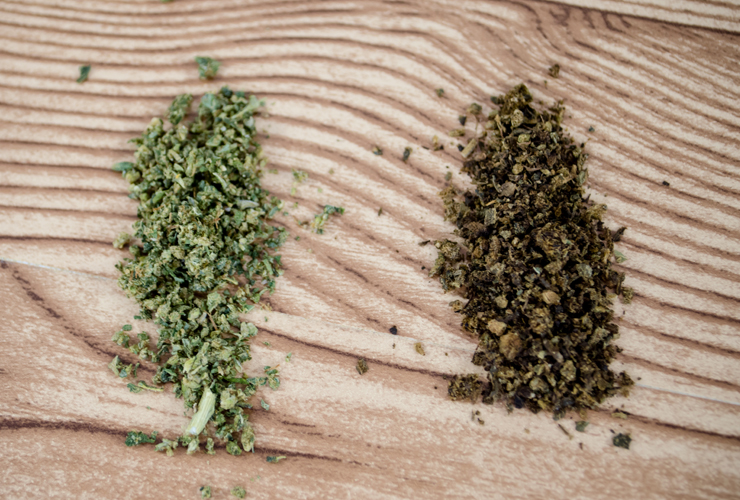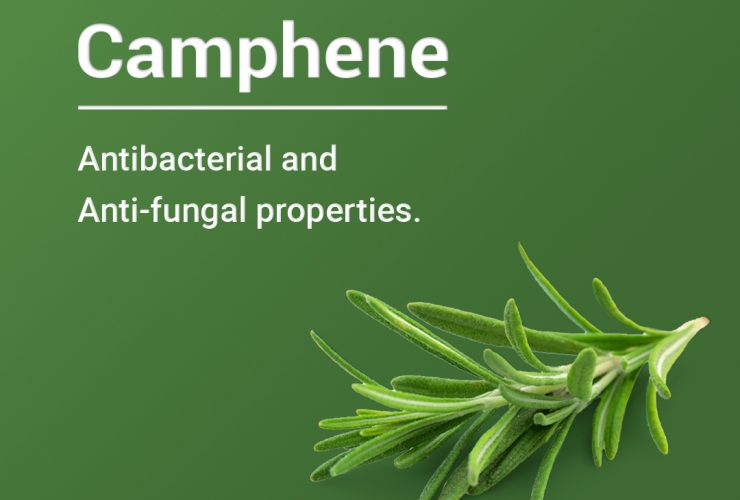Decarbing your Cannabis: A simple guide

Written by
What is decarb?
If there is one thing you need to know about cannabis when venturing into the world of DIY cannabis products, it’s decarboxylation. The word decarb is a slang term/abbreviation of the word decarboxylation. Decarboxylation is the scientific name for the process of turning the THCa and CBDa in your dried cannabis into the active compounds THC and CBD, using heat. The heat causes the acid in the cannabinoids (the “a” in THCa), to release a carbon dioxide molecule, changing its chemical formula from THCa to THC. There’s a lot of awesome geekery online about the chemistry of decarboxylating, but for now, we’ll just stick to the basics.
Why do you need to decarb?
Decarbing allows the inactive substances in the cannabis flower to become active. Yes, the inactive THCa and CBDa do have their properties and value, and more research is being done to see how effective raw cannabis (THCa or CBDa) can be on health, but for most cannabis consumers, decarboxylation is necessary to get the effect you want.
When you smoke or vape cannabis the heat instantly activates its compounds, and this is how it gives you an intoxicating effect, pain-relief, or other health benefits. However, some people don’t want to smoke or would prefer oral consumption, which has different effects and lasts longer than when inhaled. If you want to create edibles, you need to know how to decarb.
With decarbed cannabis (or AVB) you can create:
- Edibles
- Capsules
- Oils
- Tinctures
What’s the difference between CBD and THC when decarbing?
CBD takes more time or a higher temperature to activate, so if you are decarbing at the same temperature as THC, you should increase the bake time by 50%. You could cook on a higher heat for a shorter time, but you are risking burning, so to keep it simple, just cook on the same heat as your THC, for 50% longer.
So what happens if you are decarbing a THC/CBD BALANCED strain?
This is where it gets tricky because the THC will activate before the CBD and as you start to activate the CBD, the THC will degrade. Depending on what’s more important to you, you can bake for the specific time needed by the cannabinoid you prefer, but don’t expect a balanced decarb with a balanced product. If you want to mix CBD and THC the easiest way would be to decarb two separate strains, then mix them afterwards. I recommend this way so dosing is more accurate and you have the choice, depending on how you feel, to add more THC or more CBD.
How do you preserve the terpenes?
You will lose some of the terpenes using the oven method. But here are some tips to try and keep the loss to a minimum.
- Put an ovenproof lid on your baking tray or if you are decarbing small amounts you could make a foil envelope to keep the terpenes from evaporating out. Once the bake time is up, let cool on the counter before opening so that any evaporated terpenes settle back into the herb. If you are using the foil pouch method it will cool pretty fast, and you can check that its colour is golden brown, if not, pop it in for a few more minutes.
- Don’t keep opening the oven whilst you are decarbing – if you must check, wait till the last 5 minutes.
- If preserving the terpenes is super important to you investing in a product like the Nova decarb might be a good idea. Try it a few times in the oven first and see if you think you need something more effective.
What about the smell?
It’s going to smell. Some strains more than others (Some strains that don’t smell at all!), so make sure you have good ventilation in your kitchen, closing doors to other rooms can be helpful in containing the smell.
How do you do it?
The concept of decarbing is fairly simple, stick it in the oven and heat it till it becomes golden brown, and then use it to create whatever cannabis goodies you want. However, it’s easy to get confused about times and temperatures with all the differing information around on the best and most cost-effective ways to do it.
Decarbing works on a scale, less heat, and you need more time, more time and you need less heat, go over on time or heat and you degrade the cannabinoids, go under and you don’t activate it enough. Creating a weak decarb means you need a lot more to feel the effects (so it costs more) BUT you might also benefit from the unactivated product too, so it really depends on what you are trying to get out of it.
Research by Marijuana Growers HQ has shown that the best temperature for maximum conversion and preservation of terpenes is 246 degrees Fahrenheit, and to be safe, due to fluctuation in oven temperatures, 240F for 60 minutes should ensure an almost complete conversion from THCa to THC.
There are many different ways to decarb; specialized machines, a crock pot or toaster oven or even a water bath, but for this article, we are looking at a simple decarb with a common household item – the oven. Bear in mind using your oven is not the most accurate and reliable method because its temperature can fluctuate, so it won’t give as good a result as a specialist tool like the Ardent Nova Decarboxylator, but it will still work, and you will still get good results.
So let’s get on it!
Here we go! Eight steps to decarbing, based on everything we’ve just discussed.
- Preheat your oven to 240F – don’t put your herb in before it reaches maximum temperature or you won’t get a full conversion.
- Roughly grind or break up your dry herb – don’t grind too fine, it’ll burn and powdered decarb clouds up your oil or tincture.
- Place on an oven tray with an oven-proof (or foil) lid or make a foil pouch if you are decarbing small amounts.
- Bake for 60 minutes for THC or 90 minutes for CBD
- Remove tray and leave to cool before removing the lid and checking.
- Check your herb is a nice golden brown – if it’s still green put it back in the oven for 5-10 minutes.
- Once nice and brown and cooled, grind again if using in cooking, or leave as it is for oils and tinctures.
- Make your oil, tincture or edible!
Check out the free webinar with Strainprint’s own Joya Halls to learn how to make Canna Butter! You will be able to ask questions in advance of the event, but don’t worry if you cannot make it live, we will be taking questions in advance of the event as well. Register here!


